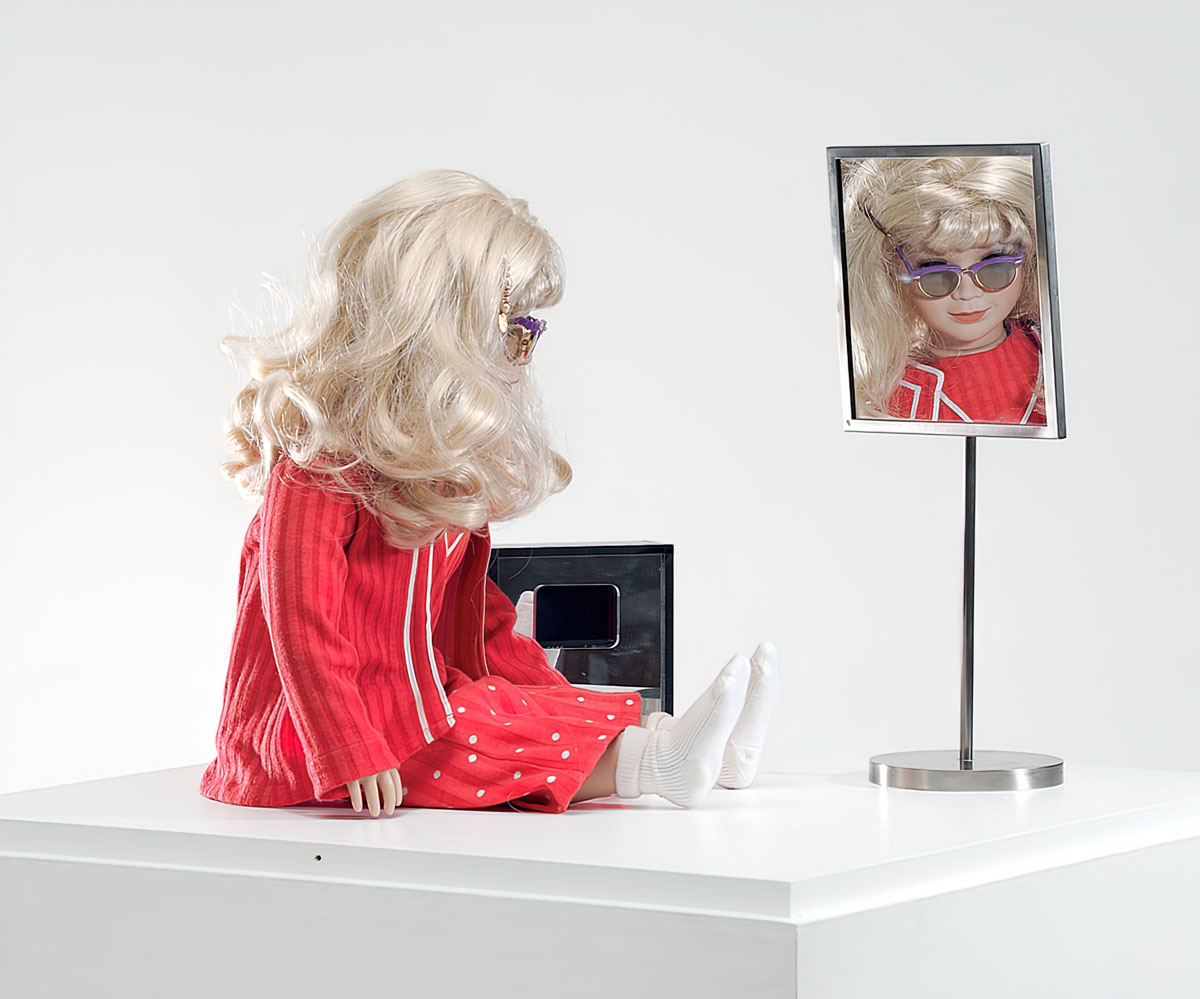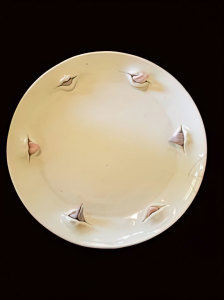ART CITIES:N.York-Lynn Hershman Leeson
 Lynn Hershman Leeson was born in Cleveland, Ohio in 1941. At once a pointed critic and a sly practical jokester, Hershman Leeson has worked across a wide range of mediums, from drawing, painting and sculpture to interactive films, net-based media works, and artificial intelligence. Overlooked for the better part of her decades-long career, Hershman Leeson is a pioneering multidisciplinary artist, critiquing the deep seated gender biases that have excluded her and other women artists.
Lynn Hershman Leeson was born in Cleveland, Ohio in 1941. At once a pointed critic and a sly practical jokester, Hershman Leeson has worked across a wide range of mediums, from drawing, painting and sculpture to interactive films, net-based media works, and artificial intelligence. Overlooked for the better part of her decades-long career, Hershman Leeson is a pioneering multidisciplinary artist, critiquing the deep seated gender biases that have excluded her and other women artists.
By Efi Michalarou
Photo: New Museum Archive

Lynn Hershman Leeson presents “Twisted” her first solo museum exhibition in New York. For over fifty years, Lynn Hershman Leeson has created an innovative and prescient body of work that mines the intersections between technology and the self. Known for her groundbreaking contributions to media art, Hershman Leeson has consistently worked with the latest technologies, from artificial intelligence to DNA programming, often anticipating their impact on society. As the artist posited in 1998, “Imagine a world in which there is a blurring between the soul and the chip, a world in which artificially implanted DNA is genetically bred to create an enlightened and self-replicating intelligent machine, which perhaps uses a human body as a vehicle for mobility”. The exhibition brings together a selection of Hershman Leeson’s wide-ranging work in drawing, sculpture, video, and photography, along with interactive and net-based works, focusing on themes of transmutation, identity construction, and the cyborg self. The presentation includes over sixty early drawings and wax-cast sculptures from the 1960s; her well-known durational performance project “Roberta Breitmore” series (1972–79), selections from her series “Water Women” (1976–present), “Phantom Limb” (1985–88), and “Cyborg” (1996–2006), among others, as well as video works from the 1970s through the present. The exhibition also features Hershman Leeson’s most recent large-scale project, “The Infinity Engine” (2014–present), a multimedia installation based on a genetics laboratory that explores the impact of genetic engineering on society; and a new commission “Twisted Gravity” (2020–21), produced in collaboration with the Wyss Institute at Harvard University, that incorporates new technologies to purify toxicities in water. Together, the works in the exhibition trace the ever-intertwined relationship between the technological and the corporeal, illuminating the political and social consequences of scientific advances on our most intimate lives.
Lynn Hershman Leeson’s master’s thesis involved writing art criticism under three pseudonyms: Prudence Juris, Herbert Goode and Gay Abandon. In that period, her artistic work was sculptural, consisting mainly of wax figures. In 1972, she exhibited several of these figures, accompanied by an audiotape of breathing and voices, at the University Art Museum in Berkeley. The museum abruptly cancelled the exhibition, claiming that audio had no place in an art museum. In 1973, with Eleanor Coppola, she created one of the first-ever installations outside a gallery setting, “The Dante Hotel”, for which each artist rented a hotel room which they furnished with a miscellany of objects. The objects in Hershman’s room evoked traces left by previous occupants and by visitors, who could re-create fragments of fictional lives. Here Hershman was interested in the multiple strata of life contained by a place or site in a given socioeconomic environment. From then on, her work was characterized by such elements as the use of masks and personae to explore “identity, reality and truth”. As early as 1972, a work titled “Self-Portrait as Another Person” revealed her interests in masquerade and in the persona, so central to her work. In the 1970s, specifically from 1973 to 1978, “Roberta Breitmore” was her major creation. Roberta Breitmore is a persona Hershman adopted over several years, enacting the transformation with wigs, make-up and clothing. With the addition of a little bureaucratic validation (driver’s licence, credit cards, address and bank account, psychological profile, etc.), the fictional character became practically real, spilling over from fiction into reality. Today nothing remains to indicate her existence apart from a few artifacts: diary, letters, photographs and diverse documents. The work itself consisted essentially of Roberta’s experiences. One of these was her very real encounter in a park with a man answering a classified ad she had placed in order to find a roommate. Roberta found herself surrounded by three men who were linked with a prostitution ring; she escaped their clutches by fleeing into a public toilet and removing her disguise. “Roberta Breitmore” let Hershman highlight several feminist problematics, such as the way the social and cultural environment constructs women’s identities, and how women are victims of the structures and conditioning imposed on them. In 1978, rather than committing suicide (as the artist had planned), Roberta ended her days during an exorcism at the grave of Lucrezia Borgia in Ferrara, Italy. It wasn’t until the late 1970s that Hershman started to work in the video medium, which she would then use to further her exploration of similar problematics and themes: the relationship of identity with social and cultural structures as well as with the media environment; the powerlessness of the female subject in these contexts; and the process by which personal power can emerge, using criticism as well as the media. Since the beginning of the 1980s, she has made about 30 videos of all types. In 1979, Hershman began creating one of the first interactive videodisk artworks. Entitled “Lorna” (1979-1983), it shows a woman suffering from agoraphobia who shuts herself away at home. Here we find echoes of the room in “The Dante Hotel” as well as reminders of “Roberta Breitmore” . In 1984, she created a second videodisk, “Deep Contact: The Sexual Fantasy Videodisk” (1984-1989). “Room of One’s Own (Une chambre à soi)” (1990-1993) is her third interactive work, first created in 1990 and refined – in terms of design and the computer program controlling the piece – until 1993. Finally, a commission from the Seattle Art Museum allowed her to create “Paranoid Mirror” (1995-1996). In these interactive works, Hershman is less interested in the construction of female persona in a media society than in how the spectator’s gaze is enmeshed in such constructions through mechanisms that the artist uses and puts in place to reveal these very regimes and forms of the gaze. All these systems include the gaze of whoever is looking and turn it back on itself, reverse it, so that the mechanism addresses itself to the looker, the eyes of one meeting the eyes of the other. Hershman then returned to the creation of characters, this time with “Conceiving Ada” her first feature film on the work and life of Ada Byron King, Countess of Lovelace (1815-1852), an amateur mathematician who is credited with the creation of the first programming language and who predicted its use in music, poetry and art. Since 1995, Hershman has created telerobotic pieces and experimented with works that use both in situ and Internet elements. Finally, let’s mention Hershman’s film “Teknolust” (2002). In it, Tilda Swinton plays the role of a bio-geneticist who uses her own DNA to create three SRAs or Self Replicating Automatons: Ruby, Marine and Olive. All four roles are played by the British actress. Ruby becomes “Agent Ruby” in the work bearing her name. The film presents characters who seek love in a world where sexuality is fast becoming an outmoded means of reproduction, an increasingly virtual world where only love is real.
Photo: Lynn Hershman Leeson, CyberRoberta, 1996. Custom-made doll, clothing, glasses, webcam, surveillance camera, mirror, original programming, and telerobotic head-rotating system, Aprox. 17 ¾ x 17 ¾ x 7 ⅞ in / 45 × 45 × 20 cm, Courtesy the artist; Anglim Gilbert Gallery-San Francisco; and Bridget Donahue Gallery-New York
Info: Curator: Margot Norton, The New Museum, 235 Bowery, New York, NY, USA, Duration: 30/6-3/10/2021, Days & Hours: Wed & Fri-sun 12:00-18:00, Thu 12:00-21:00, www.newmuseum.org


Right: Lynn Hershman Leeson, Painting Roberta’s Portrait, 1975, Courtesy the artist; Anglim Gilbert Gallery-San Francisco; and Bridget Donahue Gallery-New York


Right: Lynn Hershman Leeson Woman (Gradient), ca. 2003, Courtesy the artist; Anglim Gilbert Gallery-San Francisco; and Bridget Donahue Gallery-New York
